Your eczema is driving you crazy and you just received the package of eczema creams that you’ve been waiting impatiently for the last couple of days. You grab it and immediately run upstairs to smear it all over you. It’s been a hard day, so you decide to go to sleep right after applying it. The next day you wake up and notice you can’t open your right eye easily and it feels puffy. You get out of bed and go over to the mirror, unfortunately, not to a pretty site. Your face is red and swollen and you look like you’ve been in a boxing match with a professional boxer. Needless to say, you lost the fight!
That’s basically what happened to me a couple of weeks ago.
I was very surprised! I had purchased the top three most recommended products out there for eczema and had decided to start with the number one recommended product. Unfortunately, I had a nasty reaction to it. That was not very encouraging. What’s worse is that all three of these products that I bought on Amazon share a common ingredient. In fact, it is the “Active Ingredient” that they share, Colloidal Oatmeal.
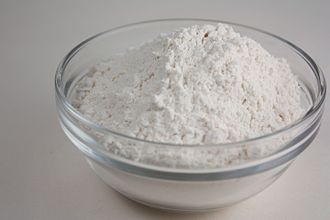
What is Colloidal Oatmeal?
Simply said, Colloidal Oatmeal is a liquefied form of oatmeal. In fact, it is easy to make. If you are interested in making it yourself you can click on this link: httpss://www.verywellfamily.com/how-to-make-your-own-oatmeal-bath-289466
Benefits of Oatmeal
There are many benefits derived from oatmeal:
- They are loaded with nutrition (high in healthy carbs, fiber, protein, Omega-3, vitamins, minerals and antioxidants.)
- Contains polyphenols such as Avenanthramides, antioxidants known to lower blood pressure and also shown to exhibit antiproliferative, anti-inflammatory, and anti-itching activity.
- Can help reduce weight gain.
- May help reduce blood sugar.
- Believed to help reduce childhood Asthma.
- Believed to be a natural laxative for constipation.
- Last, but not least, an array of skin benefits: Gentle skin cleanser and exfoliant; hydrates skin; moisturizes, soothes, and conditions dry skin; reduce skin inflammation; contains flavanoids that help protect against UVA rays; protects skin from irritation caused by Sodium Lauryl Sulphate (SLS); antioxidant properties; non-irritating and has low allergenic potential; known to help promote skin restoration caused by skin conditions such as acne, eczema and psoriasis.
So why Colloidal Oatmeal (Oats in liquid form)?
It is this last benefit list above that the Colloidal form of Oatmeal is used for. The liquid suspension of Oats allows for deeper penetration into the skin. Thus attaining maximum effectiveness for skin care and repair. This is what makes it so popular a skin product.
Sounds awesome! Yes?
Well, not always. Oddly enough, for a minute group of eczema sufferers it ironically has the opposite affect. No, really! For a minute amount of people, instead of reducing the affects that eczema causes, it actually exacerbates those symptoms. Even worse, allergic reactions to Oats can even be deadly for them!
NOTE – The following possible allergic reactions can occur:
- Severe or increased rashes.
- Swelling of the skin (especially where eczema is present).
- Increased skin redness.
- Increased itching and irritation.
- Contact Urticaria (otherwise known as Hives).
- Allergic Contact Dermatitis.
- Anaphylaxis – this is a serious and potentially deadly reaction that progressively worsens in a short time span. Therefore, immediate response is paramount to a successful recovery. Symptoms usually start with swelling of the lips and tongue and a pronounced itching of the throat, eyes, and ears. These symptoms can soon be followed by severe hives, wheezing, breathing difficulty, facial swelling, rapid or slow heartbeat, chest pains, and the development of Cyanosis (bluish lips or fingers). Not treated, this can lead to Anaphylactic shock which can result in death.
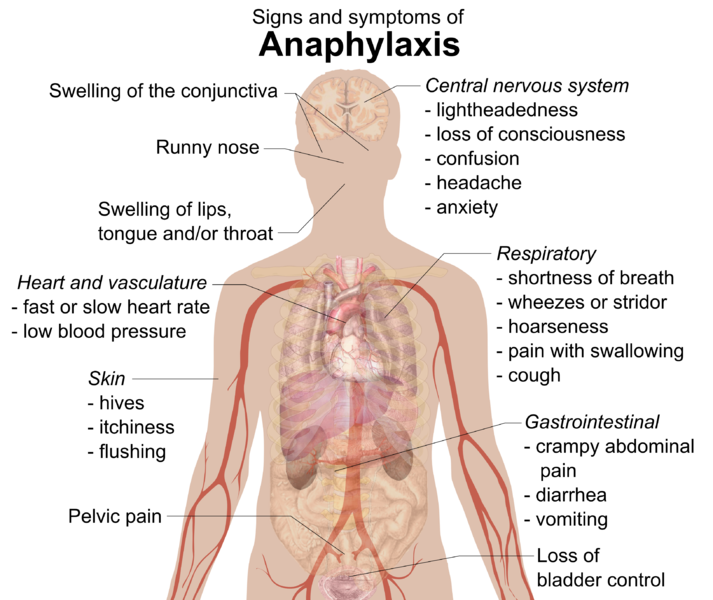
What should you do if you have an allergic reaction?
For the first six reactions listed above:
- Shower – Immediately take a bath or shower in warm water using a soap that you know you are not allergic to, if possible. If it was the soap (containing colloidal oatmeal) that you reacted to and you don’t have an alternative soap, don’t worry. Just shower with warm water. That’s what I had to do and it helped.
- Apply a healing agent – Apply a Hydrocortisone cream to the infected area. If you are against using steroids or don’t have one readily available, use a good emulsifier such as Shea Butter or Petroleum Jelly.
- Monitor – Monitor for any worsening conditions. If the symptoms seem to progressively get worse, seek immediate professional medical advice! However, if conditions seem to stabilize or improve then you most likely can relax. Just stop usage of the product that caused the reactions and continue on to step 4.
- Doctor – Contact your doctor or dermatologist as soon as possible to receive further medical advice.
Anaphylaxis – When to call 911?
If you or your child experience any of the symptoms of Anaphylaxis list above in number 7, CALL 911 IMMEDIATELY! Have available the name of the product that caused the reaction (take it with you to the hospital if you can) and a full description of the symptoms experienced. Make sure to note that it contains Colloidal Oatmeal (also known as Avena Sativa). DO NOT HESITATE! Anaphylaxis can progressively worsen very quickly and can advance to a life threatening situation. It is better to remain on the cautious side in this.
POINT OF INTEREST: Although allergic reactions to Colloidal Oatmeal (Avena Sativa) only affects approx. 1% of adults, studies have shown that in children it can be as high as 19%. httpss://www.cir-safety.org/sites/default/files/AvenaS_092014_Tent_rev.pdf
Therefore, take the following advice, especially in regards to treating your child’s eczema:
When trying any new product to treat your eczema, make sure you test it out first for allergic reactions by applying it on a small infected area and then monitor it for a couple of hours. If the product seems to reduce itching, irritation, and/or the rash, or at the very least does not seem to exacerbate conditions, then it most likely is safe to use. This method especially should be done with children and infants being that they are more susceptible to undesirable allergic reactions.
Personal Experience
With all said and done I do not know if my experience was the result of an allergic reaction to colloidal oatmeal or not. Why not?
Well, after I followed my own advice (truthfully, advice I found online), I started to research the product itself to make sure that colloidal oatmeal was indeed the culprit. What caused me to be suspicious that it may not have been an allergic reaction to colloidal oatmeal was that all three products I bought contained colloidal oatmeal. However, after testing the other two products I did not experience a similar reaction, at least not as extreme. I, therefore, concluded that there must be more to it.
Just to make sure, I retested the first product again just to double check that it had nothing to do with an interaction with any other products such as my soap or shampoo. As expected, I had a repeated sever reaction to that product, but this time it was isolated to the small area on my hand that had been smeared with it.
Now for the reveal.
To my surprise, the product I’m experiencing an allergic reaction to is Aveeno Eczema Therapy Daily Moisturizing Cream, the most recommended product on the internet! Wow! Who would’ve thought!
After an extensive research, I discovered that their product contains at least seven or eight potential allergens and/or irritants. The difference between an allergen and an irritant will be discussed soon.
However, before delving into the subject, I would like to first make a statement that in no way is it my intention to disparage their product. On the contrary, you don’t develop a name as being the number one product on the market for nothing. For most, this product is an amazing life saver. Just go to any product review of Aveeno Eczema Therapy Daily Moisturizing Cream and you’ll see the multitudes of rave reviews of this product. However, with that said, the undeniable reality is that a minority of eczema sufferers are allergic to their product (or at least have an undesirable reaction to their product). Unfortunately, there is very little that can be done. Rare (and possibly non-existent), is the ingredient that has absolutely no known cases of undesirable side effects. A company has no choice other than to cater to the majority of their clientele.
Now, with that said, let’s delve into the subject at hand.
First of all, what is the difference between an allergen and an irritant?
Allergen – a substance that causes an allergic reaction.
Irritant – a substance that causes slight inflammation or other discomfort to the body.
Allergens can cause your immune system to overreact and release antibodies called Immunoglobulin E (IgE). The antibodies migrate to cells and cause them to release inflammatory chemicals called histamines which results in the symptoms of allergy.
Irritants, on the other hand, do not cause an abnormal overreaction of the immune system. Rather, the harshness of the irritant causes damage to the skin faster than the skin’s repairing system can repair itself. Thus, redness, swelling, itching, burning and even blistering, may often occur. As is logical, the more one is exposed to the irritant, the more severe the reaction will be.
It can be difficult to distinguish between an allergic reaction and an irritant reaction. This is mainly due to the initial symptoms being pretty much the same for both irritants and allergens. Both usually start out with redness, itching, a burning sensation, and at times hives. However, while irritation reactions tend to resolve within a few hours, allergic reactions may persist for days or even weeks. The unfortunate part is that you really don’t have the luxury to wait it out and see. Responsibly, you need to assume the possibility that it is an allergic reaction which is much more serious.
However, with that said, there are two factor that can help you determine if it is more likely an irritation reaction or an allergic reaction:
Irritation reactions tend to be localized to the point of contact where the irritant was placed or where there is a preexisting eczema condition. Allergic reactions are not constrained to the point of contact of the allergen, but rather can manifest itself at any location of the body. If the location of the reaction doesn’t seem to be consistence with the applied location of the product it is most likely an allergic reaction and not an irritation reaction.
Dangerous reactions such as Anaphylaxis don’t appear to be brought on by irritants, but rather by allergens. If one experiences signs of Anaphylaxis (symptoms listed above in number 7) then rest assure it is an allergic reaction and needs immediate medical care. If, however, the reaction is localized and does not appear to exacerbate after washing off the chemical used and having applied a medical cream, then rest assure it is most likely just an irritation reaction.
Either way, stop usage of the product and consult with your personal physician or dermatologist as soon as possible.
For a more in-depth analysis of the difference between irritants and allergens, see this link: httpss://synergieskin.com/terris-blog/what-is-the-difference-between-skin-irritation-and-a-skin-allergy/
Case in Point
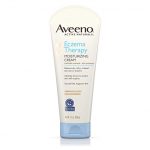
Now, let’s get back to our original case, Aveeno Eczema Therapy Daily Moisturizing Cream.
After I did extensive research on all the ingredients in this product I came up with a list of at least eight potential allergens and/or irritants. Some are more of a concern than the others due to the dangers involved. Also, the likelihood of being allergic differs between one ingredient and the next.
Here is a list of those potential problematic ingredients and their potential undesirable effects:
Potential Adverse Reactions to Aveeno Eczema Therapy Daily Moisturizing Cream
|
INGREDIENT |
POTENTIAL NEGATIVE REACTION |
| Glycerin | Allergen – Contact urticaria syndrome and protein contact dermatitis. (rare) Anaphylaxis (Very Rare) |
| Distearyldimonium Chloride | Irritant(concern)/Allergen (rare)- skin, eyes, and lungs |
| Cetyl Alcohol | Allergen – Contact Dermatitis |
| Dimethicone | Allergen – Rash, itching/swelling (especially of the face/tongue/throat), severe dizziness, trouble breathing. (ie. possible signs of Anaphylaxis – very rare). Redness, itchiness or swelling. Drying skin. (rare) |
| Avena Sativa (Oat) – (kernel oil, kernel extract, Colloidal Oatmeal) | Allergen – Blotchy, irritated, itchy skin. Rash or skin irritation on and in the mouth. Scratchy throat. runny nose or nasal congestion. Itchy eyes. Nausea. Vomiting. Diarrhea. Stomach pain. Difficulty breathing. Anaphylaxis. Fatigue |
| Benzalkonium Chloride | Allergen – Signs of an allergic reaction, like rash; hives; itching; red, swollen, blistered, or peeling skin with or without fever; wheezing; tightness in the chest or throat; trouble breathing, swallowing, or talking; unusual hoarseness; or swelling of the mouth, face, lips, tongue, or throat. Anaphylaxis. Signs or symptoms of infection. Swelling. Redness. Very bad skin irritation. |
| Sodium Chloride | Allergen – Hives; difficult breathing; swelling of your face, lips, tongue, or throat. |
Of course, it must be noted that adverse reactions to all these ingredients are rare. Take, for instance, Sodium Chloride, commonly known as salt. How many people do you know that are allergic to salt!? Allergies to salt, albeit rare, can happen. The point being is that we need to put things into perspective. Although we need to be cautious, that’s not cause for anxiety. We shouldn’t refrain from buying and trying a new product out just because of a “potential” allergic reaction. If so, we couldn’t take any medication at all as almost all medications have some type of potential side effects. Just because something qualifies as a potential Allergen or Irritant does not mean you will experience an adverse reaction to it. Most likely you will not unless it is known to have a high potential of reaction, like in cleaning supplies, for example.
Now, at this point, I had a dilemma. Several of these ingredients could be the source of my allergic reactions (which were redness, swelling, increased itching, and increased rashes), but which one or ones?
My first response was to check their website, www.aveeno.com, for any possible helpful info. There is on their website a link to the following webpage, httpss://www.aveenomd.com/resource-center/clinical-data, but it provided very little info beyond a vague statement that allergic reactions can occur.
My next step was to go to their “Contact” page. It gave me two options: call or submit a form. Wanting a more official response, I chose the latter. I basically wrote to them that I had an allergic reaction to their product and wanted to know which ingredients would be the most likely culprit(s). I received a very generic response from them which I assumed was an automated response that basically means, “we will get back to you.” I figured I’d give them a week to respond and if they didn’t, I’d call.
Here is their generic response I received (BTW – Aveeno is owned by Johnson & Johnson):
Dear Xxxxx,
Thank you for contacting Johnson & Johnson. It is always important to hear from our customers and we appreciate the time you have taken to contact us.
Johnson & Johnson markets products on a global basis. Although each of our products are of the same high quality worldwide, we do offer different products in different countries, and each location is responsible for products sold in its particular area.
To ensure your comments are directed appropriately, your message has been forwarded to the appropriate Johnson and Johnson Consumer Care Center for further processing.
Again, thank you for your interest in Johnson & Johnson.
Casey
Consumer Care Center
000797936
After a week of no further response, I decided to call them. Being fair, however, it does specifically state the following on their website, so I can’t complain:
To report an adverse event or a side effect from one of our products, please call us at 866-4AVEENO so we can give you more personalized attention.
I spoke to a very nice lady name Abbey. After explaining what I was seeking out from them she looked into it and told me that they do not store a database of that type of information. I then mentioned to her the benefits that such a database would be for the company as it would build good customer relations (not to mention that the customer would benefit as well). She made note of it and told me that she would pass the suggestion along to her superiors. Whether that will amount to anything or not, I don’t know and am not getting my hopes up.
A couple of days later I received mail from them with coupons and a check that I’m assuming was for reimbursement due to the adverse reaction of their product; a customer courtesy policy well understood.
Regardless, now I was stuck to resolving this problem on my own. What ingredient or ingredients list am I allergic to? The only way to resolve this now is to schedule an appointment with a dermatologist and get myself tested on all 8 ingredients. How this is done is for another discussion I hope to write up in a future article.
So after all said and done, what is the silver lining in this story?
- I’ve learned to NOT throw caution to the wind. ALWAYS test new things out BEFORE jumping straight into it, especially if there are warnings on the label.
- At least now I know for sure that Contact Dermatitis is one of the forms of Eczema that I have.
- Always look on the bright side of life! 🙂

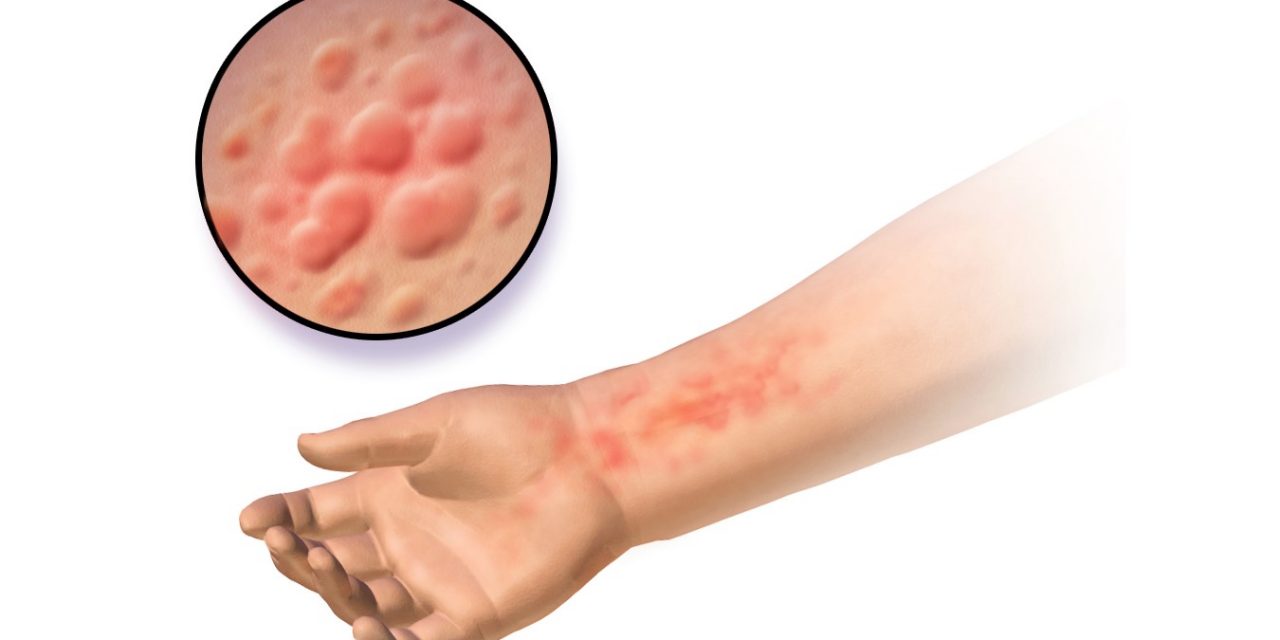
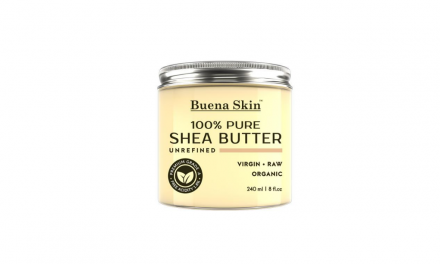
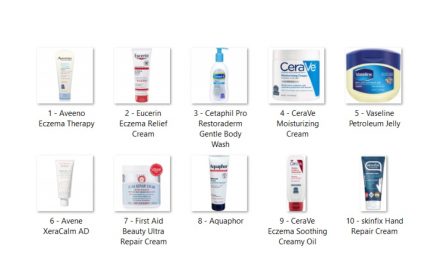
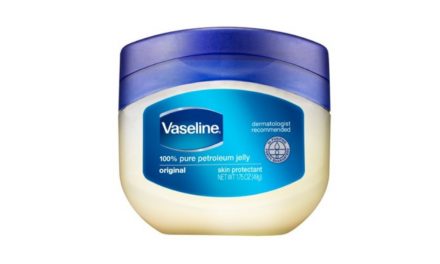
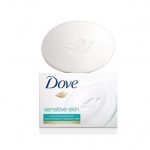
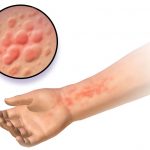
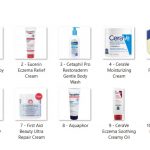
Recent Comments